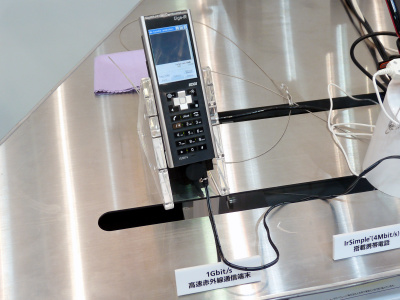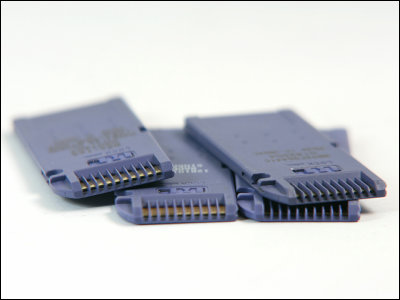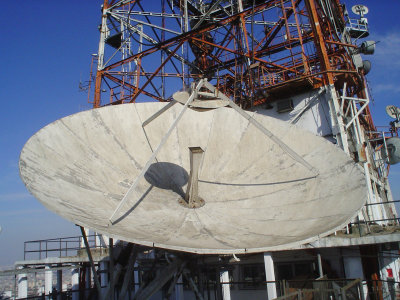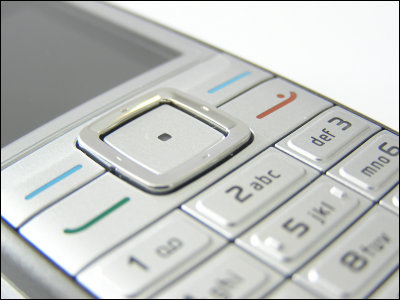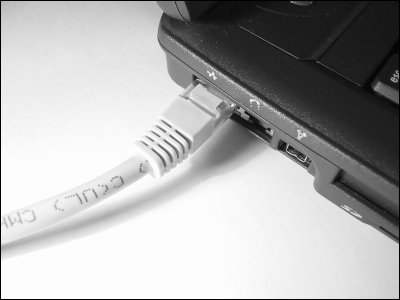Tokyo Tech develops the world's first LO phase-shift type 28 GHz phased array radio for 5 G that enables high-speed wireless communication of 15 Gbps

A research team of Kenichi Okada of Tokyo Institute of Technology succeeded in developing a compact radio using the 28 GHz band for next generation communication 5 G. Radio equipment that can be manufactured cheaply with silicon CMOS chips achieves 15 Gbps ultra high-speed wireless transmission and also achieves high-precision beam forming.
Successfully miniaturized millimeter-wave radio for 5G realized with an inexpensive integrated circuit, ideal for mounting on a smart phone | Tokyo Tech news | Tokyo Institute of Technology
https://www.titech.ac.jp/news/2018/041704.html
Toward the practical application of the 5 th generation mobile communication system (5 G) towards the Tokyo Olympics and Paralympic Games in 2020, various wireless communication technologies are being developed. Although the use of radio waves of a high frequency band is being considered for ultra high speed communication at 5 G, it is considered indispensable to manufacture a small radio set that can be used for mobile terminals such as smart phones at low cost for the spread of 5 G I will.
In 5G, which uses relatively short wavelength radio waves such as millimeter waves , it is necessary to utilize " beam forming " to narrow the radiation direction of radio waves using multiple antennas, but mobile In IC chips for terminals, development of a phase shifter circuit that can control the phase in the high frequency band was required.
Associate Professor Okada's research team succeeded in miniaturizing the phase shifter required for beam forming in the 65 nm process silicon CMOS and developed a 28 GHz band phased array radio for 5 G. The prototype chip is equipped with 4 phased array radios in a space of 4 mm × 3 mm.

For the phase control in the high frequency band, we used an LO phase shifter that changes the phase of the local oscillator (LO) signal as the carrier, not the RF phase shifter that changes the phase of the RF modulation wave itself. It is said that high signal quality is realized by using LO phasor which principle does not cause gain variation due to phase change.
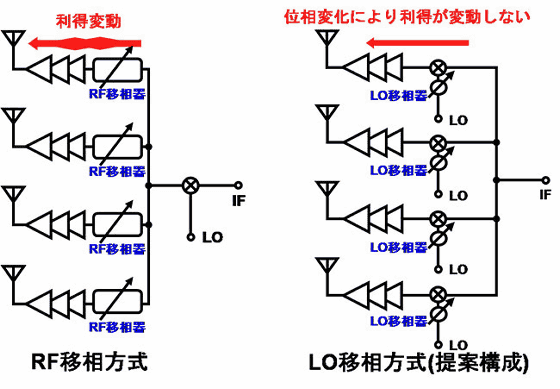
In the LO phase method, it was difficult to miniaturize the circuit, but succeeded in accommodating a small area by making the polyphase filter and the resonator a single enhancer. It is the world's first 28 GHz band radio for 5 G by the LO phase method.
Two CMOS chips are mounted on the evaluation board developed.
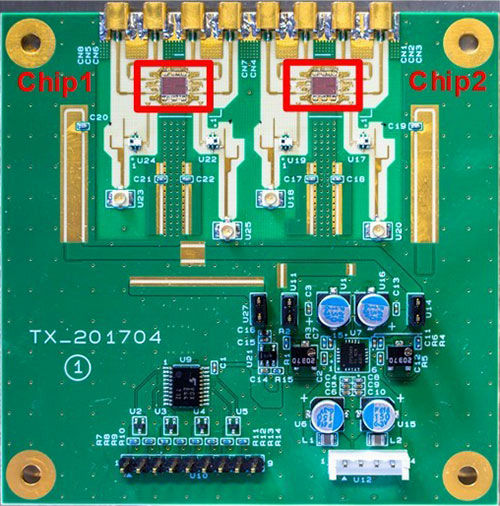
Eight antennas are available.

In a data transfer test where two modules face each other at a distance of 5 meters indoors, a communication speed of 15 Gbps was achieved. This seems to be 125 times faster than the previously reported 28 GHz band radio using the CMOS integrated circuit. The power consumption was 1.2 W at the time of transmission per chip and 0.6 W at the time of reception.
Moreover, by shifting the transmission / reception timing from each antenna with the LO phaser, we have successfully adjusted the radiation direction of radio waves with an accuracy of 0.1 degree. According to Okada, Associate Professor Okada said that if you use 256 elements, it will be possible to communicate at a distance of 15 km at 10 Gbps.

Associate Professor Okada says that the 28 GHz phased array radio of the developed LO phase shift method will be aimed at practical application to smart phones and base stations around 2020.
Related Posts:
in Hardware, Posted by darkhorse_log


